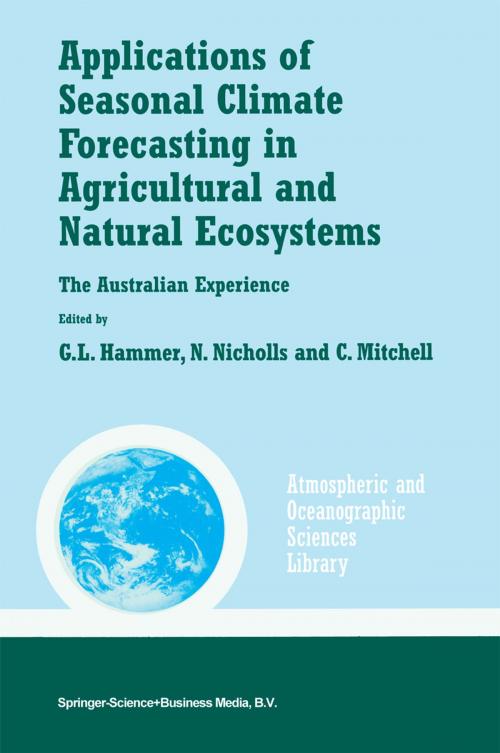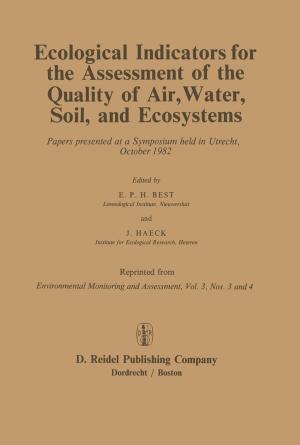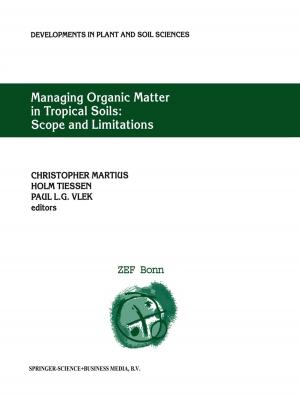Applications of Seasonal Climate Forecasting in Agricultural and Natural Ecosystems
Nonfiction, Science & Nature, Science, Other Sciences, Meteorology, Biological Sciences, Environmental Science| Author: | ISBN: | 9789401593519 | |
| Publisher: | Springer Netherlands | Publication: | March 9, 2013 |
| Imprint: | Springer | Language: | English |
| Author: | |
| ISBN: | 9789401593519 |
| Publisher: | Springer Netherlands |
| Publication: | March 9, 2013 |
| Imprint: | Springer |
| Language: | English |
Climate variability has major impacts in many parts of the world, including Australia. Developments in understanding of the El Niño - Southern Oscillation Phenomenon have introduced some skill in seasonal to inter-annual climate forecasting. Can this skill be harnessed to advantage? Or do we just continue to observe these impacts? How does a decision-maker managing an agricultural or natural ecosystem modify decisions in response to a skillful, but imprecise, seasonal climate forecast? Using Australian experience as a basis, this book focuses on these questions in pursuing means to better manage climate risks. The state of the science in climate forecasting is reviewed before considering detailed examples of applications to:
- farm scale agricultural decisions (such as management of cropping and grazing systems);
- regional and national scale agricultural decisions (such as commodity trading and government policy); and
- natural systems (such as water resources, pests and diseases, and natural fauna).
Many of the examples highlight the participatory and inter-disciplinary approach required among decision-makers, resource systems scientists/analysts, and climate scientists to bring about the effective applications. The experiences discussed provide valuable insights beyond the geographical and disciplinary focus of this book. The book is ideally suited to professionals and postgraduate students in ecology, agricultural climatology, environmental planning, and climate science.
Climate variability has major impacts in many parts of the world, including Australia. Developments in understanding of the El Niño - Southern Oscillation Phenomenon have introduced some skill in seasonal to inter-annual climate forecasting. Can this skill be harnessed to advantage? Or do we just continue to observe these impacts? How does a decision-maker managing an agricultural or natural ecosystem modify decisions in response to a skillful, but imprecise, seasonal climate forecast? Using Australian experience as a basis, this book focuses on these questions in pursuing means to better manage climate risks. The state of the science in climate forecasting is reviewed before considering detailed examples of applications to:
- farm scale agricultural decisions (such as management of cropping and grazing systems);
- regional and national scale agricultural decisions (such as commodity trading and government policy); and
- natural systems (such as water resources, pests and diseases, and natural fauna).
Many of the examples highlight the participatory and inter-disciplinary approach required among decision-makers, resource systems scientists/analysts, and climate scientists to bring about the effective applications. The experiences discussed provide valuable insights beyond the geographical and disciplinary focus of this book. The book is ideally suited to professionals and postgraduate students in ecology, agricultural climatology, environmental planning, and climate science.















